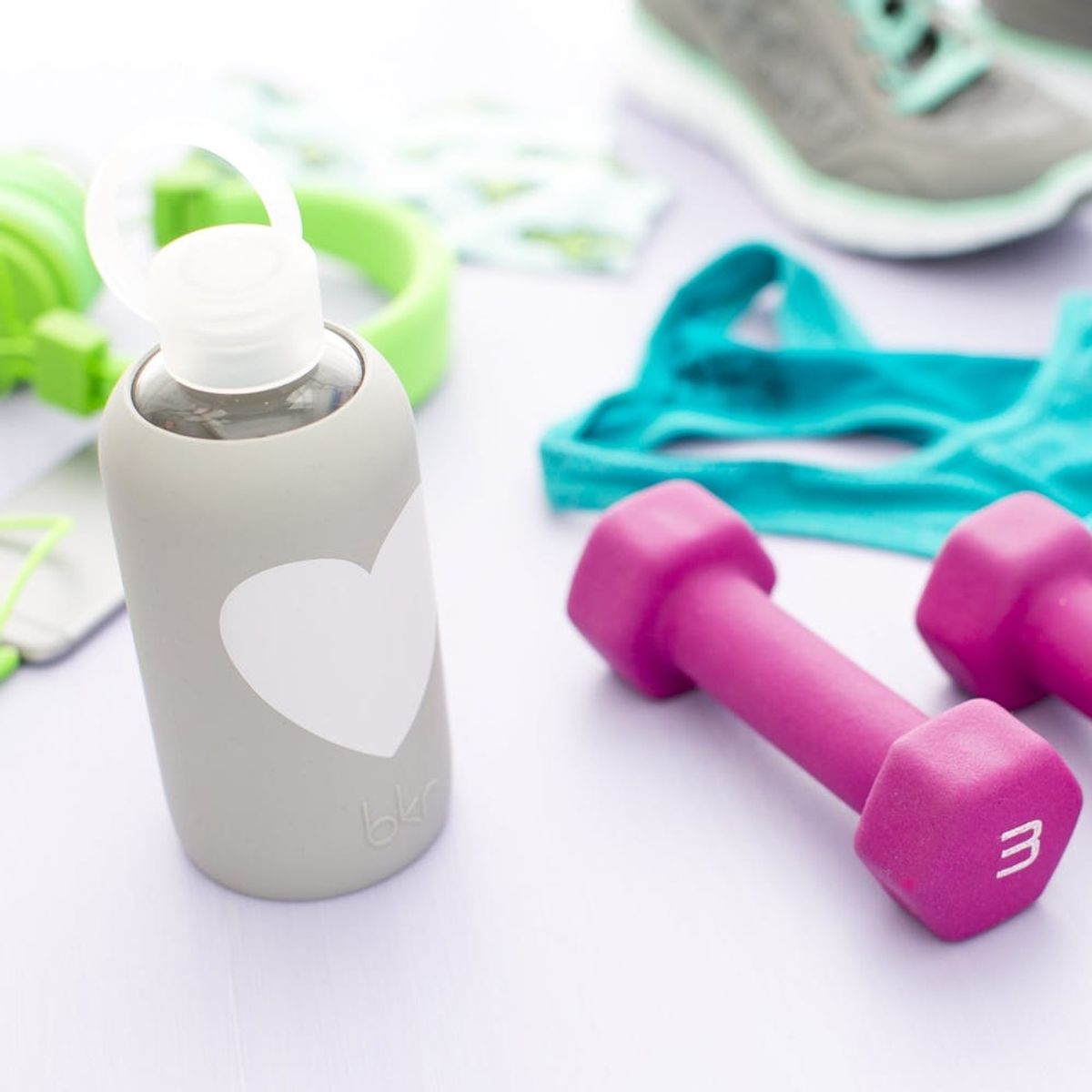Time to stock up on those denture tablets!
How to Clean Your Water Bottle the RIGHT Way

We all know how important it is to stay hydrated. So whether you’re heading to an intense sweat sesh at the gym or hanging by the pool, you want to make sure to have your water bottle handy. But if you’re carting it around with you all the time, you need to clean it often. And how to wash depends on what type it is. Scroll down for tips for keeping stainless steel, glass, plastic, and more reusable bottles in tip-top shape — and germ-free — for your daily dose of H2O.

stainless Steel
Stainless steel water bottles are our favorite too. But since germs thrive in moist environments, this container could be a breeding ground for bacteria. Eric Hansen, Director at Naglene Outdoors, recommends washing out your bottle at the end of each day to prevent germs from growing. While a quick under-the-faucet wash will do, investing in a Premium Bottle Products Bottle Brush ($11, pack of three) and using a strong cleaning agent like vinegar is even better.
For a thorough scrub, pour a splash of white vinegar (approximately two capfuls) into the bottle. Replace the cap and shake vigorously. Then open to add more vinegar until it’s about a third full, and scrub the sides with a bottle brush. Finally, put the cap back on (last time — we promise!) and shake to loosen all the accumulated gunk. Pour out the contents, rinse with warm water, and voilà. You’re good to go!

Glass
With these styles, washing by hand is recommended, especially if there’s an attached rubber sleeve. Start by filling the vessel with hot water and adding a few drops of dish soap. Then shake, rinse with warm water, and leave out to dry. Depending on how recently you washed it (be honest!), consider letting it soak overnight for a deeper cleanse.
Glass bottles that don’t include a rubber exterior can simply be thrown in the dishwasher.

Plastic
Plastic water bottles are the most germ-prone and known to develop unpleasant odors and tastes (ew!), especially when stored incorrectly. That’s why a little extra TLC is needed here.
First, wash the bottle with soap and water to see if it will remove any of the unwanted smell. If not, try adding a teaspoon of bleach and a teaspoon of baking soda, fill with water, and let sit overnight. The next day, rinse thoroughly and leave out to dry. To tackle the tougher odors, outdoor retailer REI suggests exactly what you’d use for bad breath: anti-bacterial mouthwash.
aluminum
Since these tend to have small mouth openings, dishwashers don’t always get the job done. What will do the trick is using a cleaning tablet designed for this purpose, like the one from CamelBak ($12 for eight packets). Or, surprisingly, denture cleansing tablets will also work well. Place the tablet in the bottle along with warm water and allow it to sit for as long as directed on the package (usually at least 15 minutes). Once the time is up, rinse with warm water and let dry. If persistent stains or mold remain, Lizzy Scully of the website Gone Outdoors has some extra tips: Use a long brush to scrub hard-to-reach areas, or fill with a mixture of uncooked rice, dish soap, and water, and then shake vigorously.
Hacks aside, the best way to maintain a clean, reusable canteen is simple: Rinse it out after each use and allow it to dry completely. This will ensure a great-tasting and refreshing sip every time.
How do you clean your water bottle? Tweet us @BritandCo!
Brit + Co may at times use affiliate links to promote products sold by others, but always offers genuine editorial recommendations.
(Photos via Getty and Brit + Co)



















